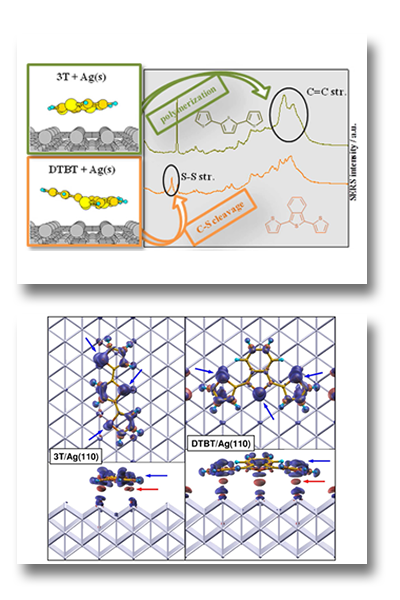ISM is working on the preparation of organic semiconductors (π-conjugated oligothio-phenes) interacting with metal surfaces for optoelectronic applications. These compounds are p-type semiconductors able to self-organize at the interface with the electrode to maximize the transport of charge in the final device. This is the key process for the development of molecular electronics representing a valid low-cost alternative to the traditional one. The work goes beyond the use of commercial organic semiconductors (e.g. the terthiophene, 3T). Particularly interesting is the synthesis of compounds such as 1,3-ditienilbenzo[c]thio-phene (DTBT) and analogues, characterized by the presence of a condensed benzene ring to the oligothio-phene, which allows large variations in the optical properties of the system. Recent ISM activities consist in the careful study of these electrode-semiconductor interfaces by means of conventional optical spectroscopy and synchrotron radiation, assisted by ab initio simulations at the atomic scale of the interface. Preliminary results for the DTBT/Ag system show that the oligothiophene-metal interaction processes play an extremely important role in pushing towards the formation of an ordered interface rather than the degradation of the semiconductor onto the electrode.
Staff: Ambra Guarnaccio, Giuseppe Mattioli, Antonio Santagata


 English (UK)
English (UK)  Italiano (Italia)
Italiano (Italia)